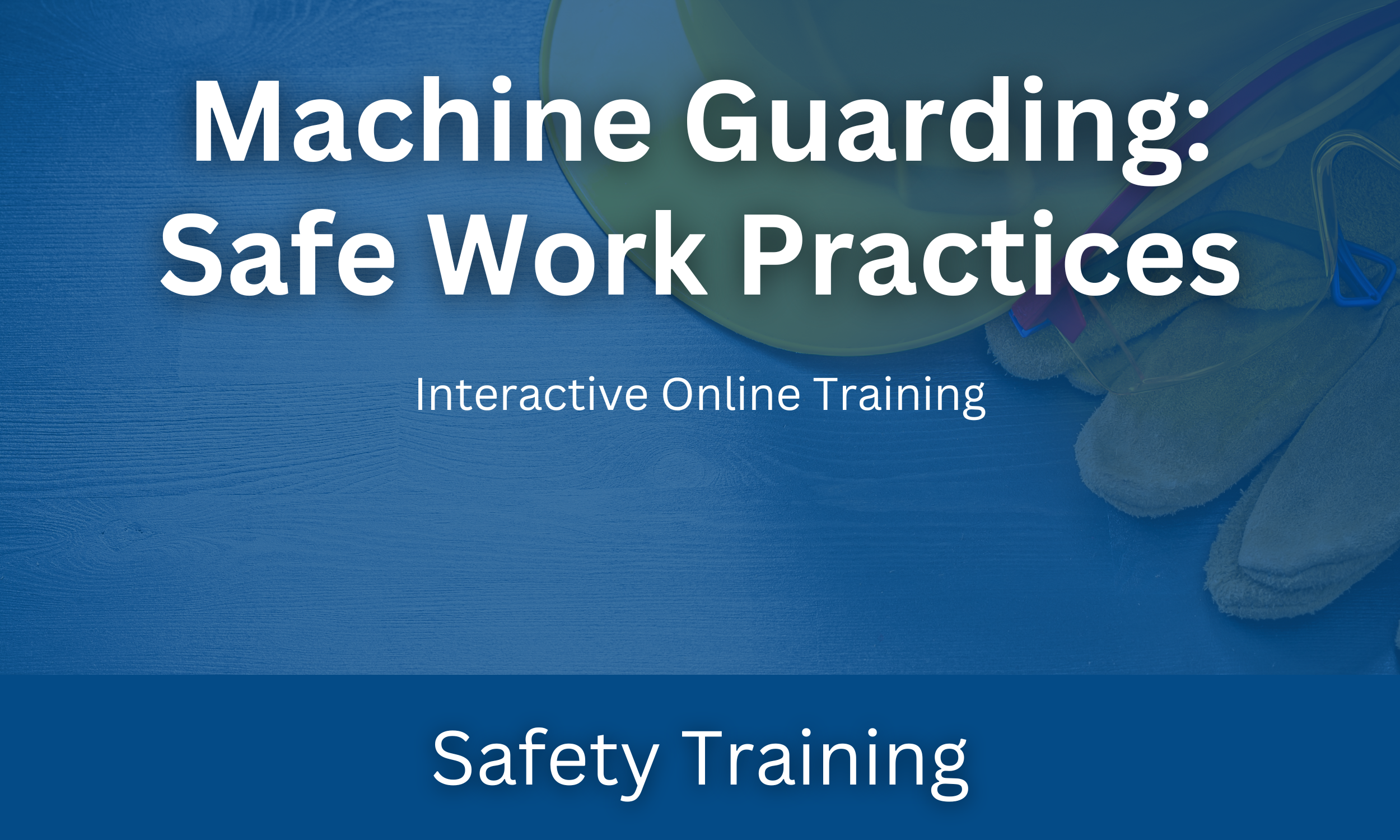Machine Guarding: Safe Work Practices
Do you work with or around machines or use power tools? If so, you would probably think twice about wearing loose clothing in your workplace – including shoes that pose a trip hazard or lanyards and other objects hanging around your neck. In your line of work, what type of clothing you put on – and how well it fits – might make the difference between dismemberment or even death. The utility of power tools and equipment – whether electrical, pneumatic, hydraulic or any other method of mechanical powering – comes with a slew of dangers for their operators. Machine safeguarding requirements are in place to give operators their best chance at safe use. Both administrative control measures that govern how equipment is used maintained or otherwise interacted with – as well as engineering control measures that seek to remove or separate employees from hazards – are important in machine safeguarding. As we just discussed – you have some control over your safety in your choice of clothing each workday, but your safety is more than a matter of clothing choice. Hazard awareness, well-maintained equipment guards, and other safety devices and practices play a huge part in keeping you and your coworkers safe on the job. In this training, you will learn to identify common machine hazards and the types of safeguards that should be employed to protect against those hazards. We will also explore how the proper use of personal protective equipment can act as your last line of defense against the dangers of machine use. This training will also help you build your understanding of equipment maintenance repair practices machine stability precautions proper tool use and guarding and other safe work practices tie-in to machine safeguarding requirements.
Please use the Firefox browser to access this resource after enrollment.
Duration: 40 minutes
Closed Caption: English, Spanish, French, Korean
Do you work with or around machines or use power tools? If so, you would probably think twice about wearing loose clothing in your workplace – including shoes that pose a trip hazard or lanyards and other objects hanging around your neck. In your line of work, what type of clothing you put on – and how well it fits – might make the difference between dismemberment or even death. The utility of power tools and equipment – whether electrical, pneumatic, hydraulic or any other method of mechanical powering – comes with a slew of dangers for their operators. Machine safeguarding requirements are in place to give operators their best chance at safe use. Both administrative control measures that govern how equipment is used maintained or otherwise interacted with – as well as engineering control measures that seek to remove or separate employees from hazards – are important in machine safeguarding. As we just discussed – you have some control over your safety in your choice of clothing each workday, but your safety is more than a matter of clothing choice. Hazard awareness, well-maintained equipment guards, and other safety devices and practices play a huge part in keeping you and your coworkers safe on the job. In this training, you will learn to identify common machine hazards and the types of safeguards that should be employed to protect against those hazards. We will also explore how the proper use of personal protective equipment can act as your last line of defense against the dangers of machine use. This training will also help you build your understanding of equipment maintenance repair practices machine stability precautions proper tool use and guarding and other safe work practices tie-in to machine safeguarding requirements.
Please use the Firefox browser to access this resource after enrollment.
Duration: 40 minutes
Closed Caption: English, Spanish, French, Korean
Do you work with or around machines or use power tools? If so, you would probably think twice about wearing loose clothing in your workplace – including shoes that pose a trip hazard or lanyards and other objects hanging around your neck. In your line of work, what type of clothing you put on – and how well it fits – might make the difference between dismemberment or even death. The utility of power tools and equipment – whether electrical, pneumatic, hydraulic or any other method of mechanical powering – comes with a slew of dangers for their operators. Machine safeguarding requirements are in place to give operators their best chance at safe use. Both administrative control measures that govern how equipment is used maintained or otherwise interacted with – as well as engineering control measures that seek to remove or separate employees from hazards – are important in machine safeguarding. As we just discussed – you have some control over your safety in your choice of clothing each workday, but your safety is more than a matter of clothing choice. Hazard awareness, well-maintained equipment guards, and other safety devices and practices play a huge part in keeping you and your coworkers safe on the job. In this training, you will learn to identify common machine hazards and the types of safeguards that should be employed to protect against those hazards. We will also explore how the proper use of personal protective equipment can act as your last line of defense against the dangers of machine use. This training will also help you build your understanding of equipment maintenance repair practices machine stability precautions proper tool use and guarding and other safe work practices tie-in to machine safeguarding requirements.
Please use the Firefox browser to access this resource after enrollment.
Duration: 40 minutes
Closed Caption: English, Spanish, French, Korean












